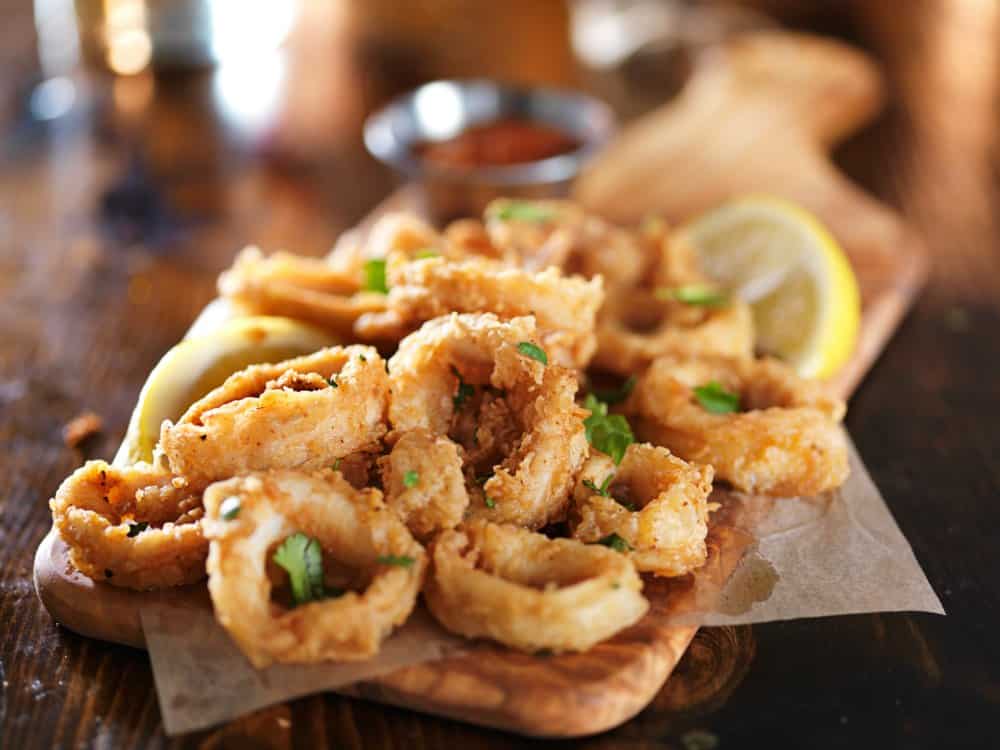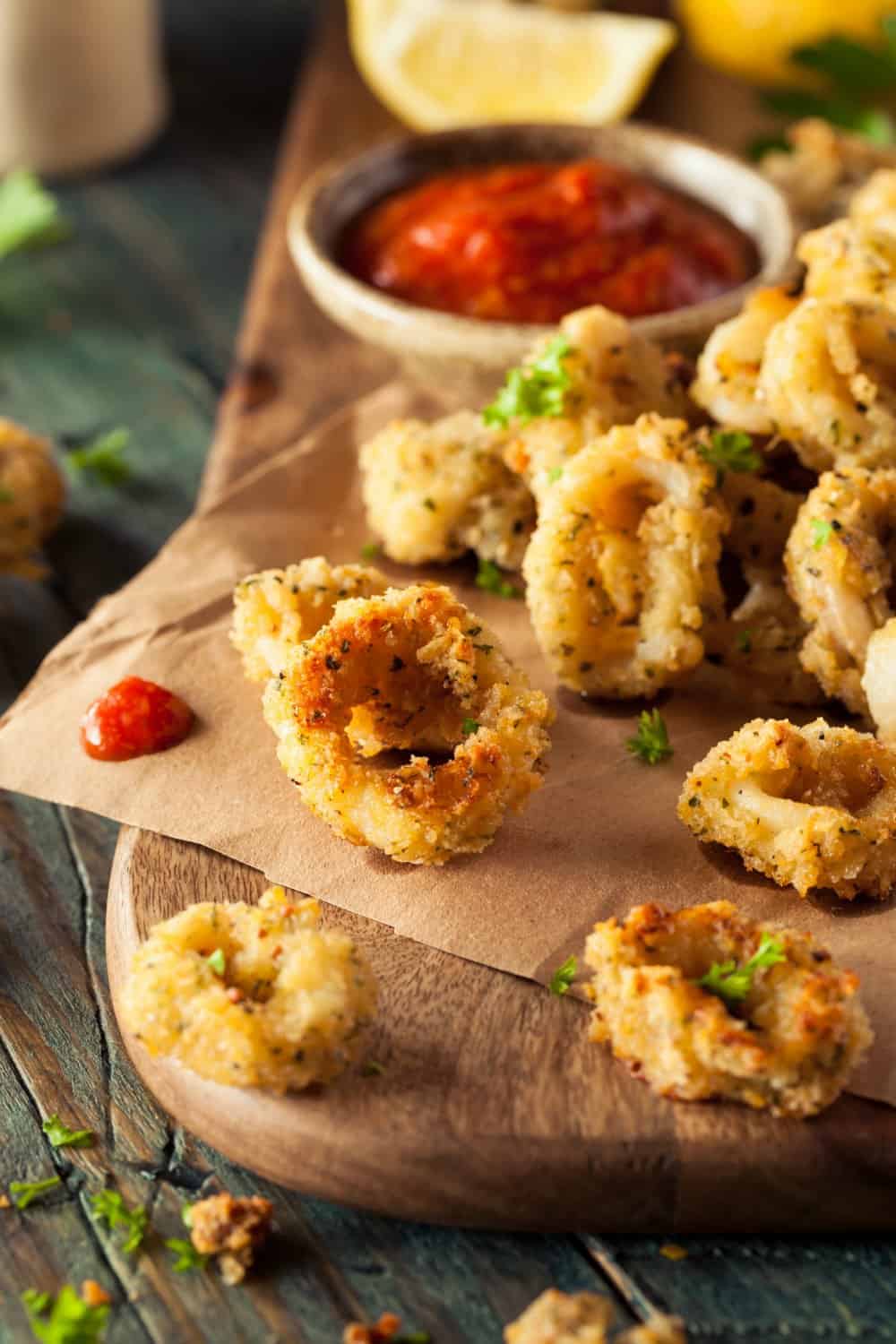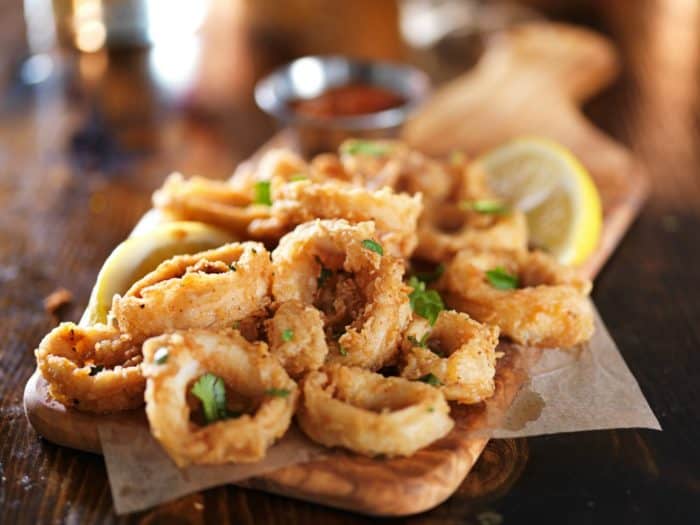This post may contain affiliate links. Please read our privacy policy for additional information.
Despite its popularity, you’ve probably once seen some Calamari on a menu and had no idea what it actually is. Once only a dish found in Italian restaurants, over the years, it has become a common staple on the menu of restaurants covering all kinds of different cuisines. So, what is Calamari, and how do you go about cooking it for yourself?

What Is Calamari?
The word calamari comes from the Italian word for squid, ‘calamaro,’ but calamari actually refers to all squid dishes. Calamari is the most commonly coated and deep-fried; this fried fishy treat has become the traditional way of serving calamari in most Western countries.
Calamari is sometimes served without its crunchy coating as part of a seafood salad, but any restaurant that understands the joy of biting into a golden deep-fried calamari ring will label it simply as squid to not disappoint seafood lovers.
Most restaurants serve calamari as bite-size squid rings, with lemon and tartar sauce on the side.
An important sign that calamari has been cooked correctly is when it is soft enough to chew through; stringy, tough calamari is not what anyone wants.
Like most seafood, squid is rich in protein, zinc, and vitamin B12, making calamari a healthy snack, as long as you leave aside the fact that it has usually been deep-fried.
How to Fry Calamari
#1 – Find Your Calamari
The first step is preparing your squid ready for coating and frying. You have two options when purchasing your squid; you can either opt for ready-cut squid rings or buy it whole and cut it yourself.

The decision here is that, if you get it pre-cut, you do not get to determine the thickness of your squid rings.-
After all, maybe you feel like having absolutely massive Calamari rings?
#2 – Soaking
Once you have your squid rings cut and ready, you need to soak them for around 30 minutes. The idea behind soaking the rings is to add an extra layer of flavor, while also softening the meat.
What you soak your rings in is a point of contention, however. Some people argue that a bowl of milk is all you need to create the perfect texture, while others prefer to use lemon juice.
It really comes down to whether you want your rings to have a strong citrus flavor or not, and how much time you are prepared to dedicate to squeezing lemons. Perhaps use the milk leftover from making the best homemade pancakes ever?
#3 – Coating
While your squid rings are soaking, you can prepare the coating. Exact amounts are not too important for this, as you are going to have leftover flour mixture after coating your rings; this is perfectly fine because it is always better to have too much than to have uncoated rings.
Place flour, salt, and pepper into a bowl and mix. You can also add extras seasonings like cayenne, pepper, paprika, and garlic powder. It all depends on what final flavor you are looking for.
Get a separate bowl and fill about halfway with either milk or buttermilk. You are going to need this in order for the second layer of your flour mixture to stick.
This is where it all starts to come together.
Take one squid ring at a time and remove it from the lemon or milk and place it in the bowl of flour. Make sure that the entire ring is well covered.
Then transfer it to the milk bowl and dredge it, before placing it back in the flour for a second coating. This helps ensure an even coating and a firm, crisp crunch.
You might want to divide your flour coating between two bowls, one for each stage of the process in order to avoid the flour becoming clumpy and hard to work with.

#4 – Frying
Fill a large saucepan to the two-thirds mark with neutral cooking oil. Once the oil reaches 400 degrees Fahrenheit, place your coated rings into the pan and allow them to cook for 2 to 3 minutes.
It is important that they do not cook them for any longer, as they will develop a weird rubbery texture that is common in bad restaurants.
Once done, remove the rings from the oil and place them on a layer of kitchen towel to help remove some of the excess oil. You can then add any extra seasonings to your calamari, such as salt, pepper, or spices.
Finally, serve them hot and fresh with some lemon and tartar sauce and enjoy!












Leave a Comment or Recipe Tip